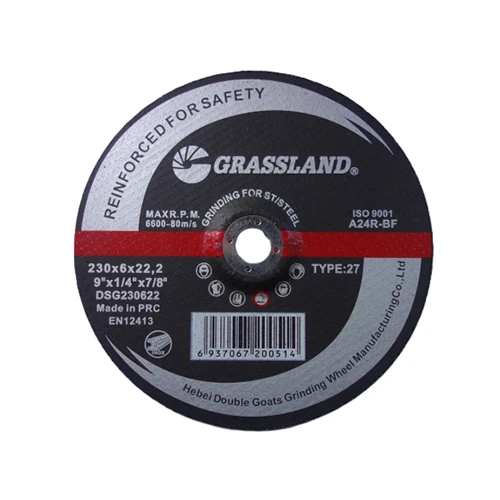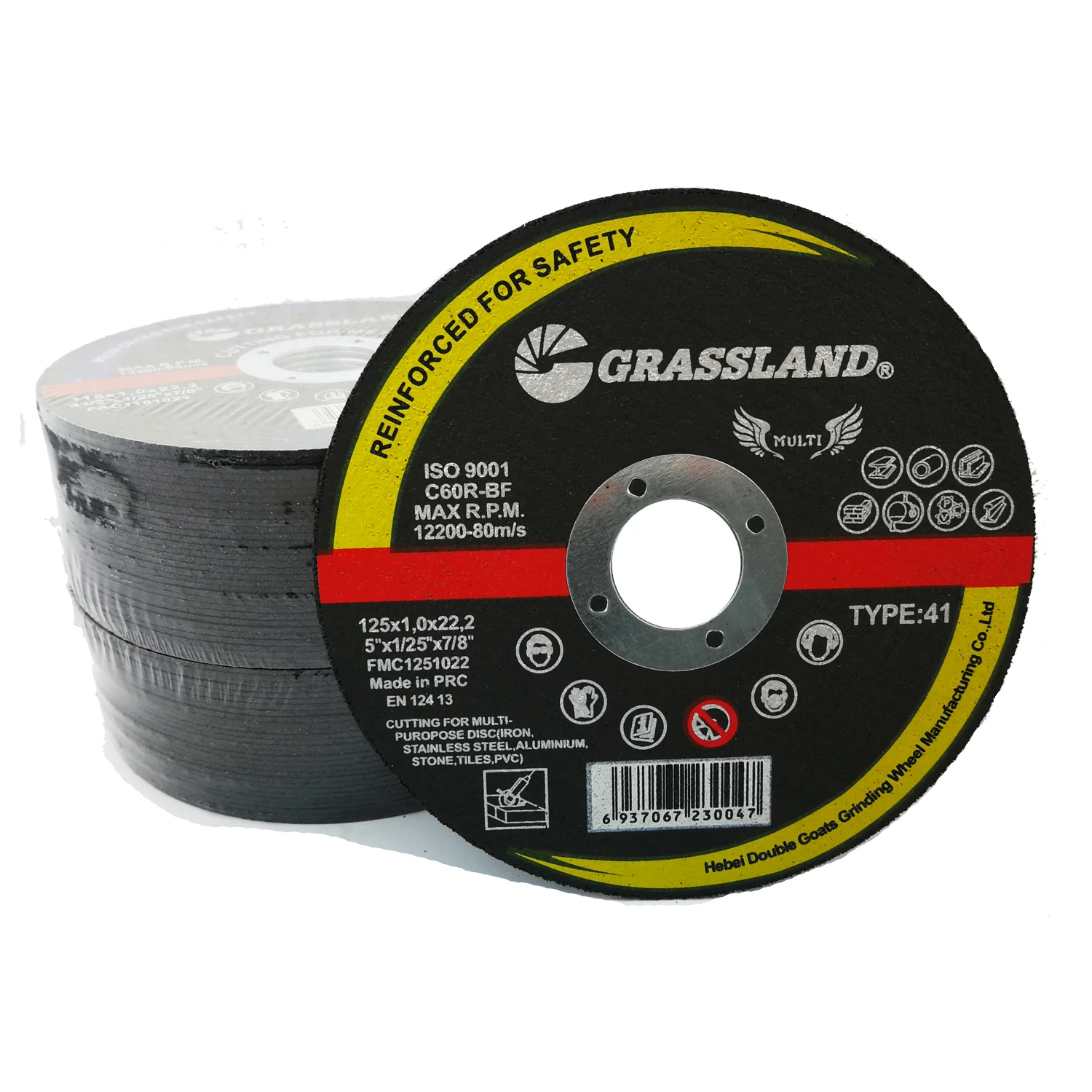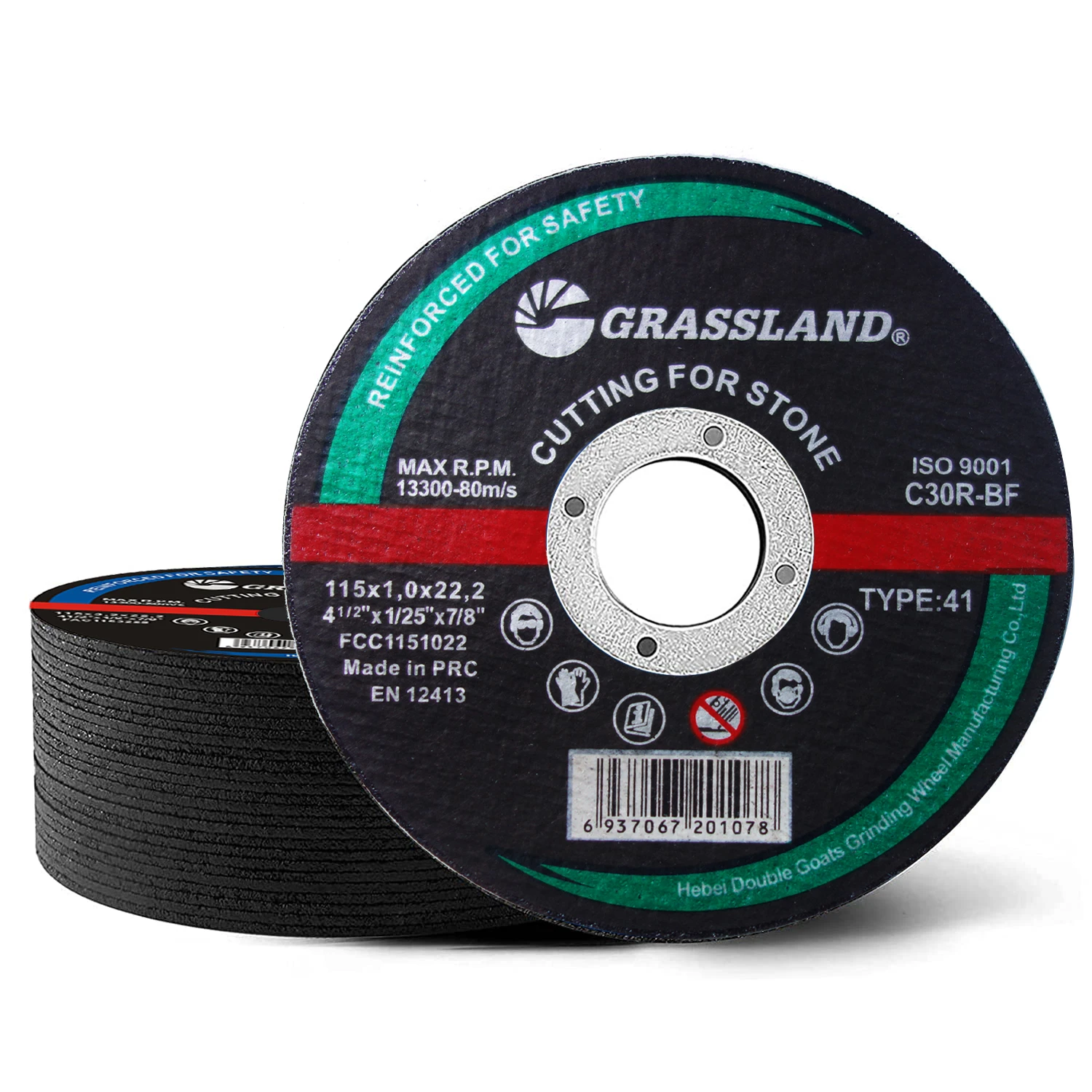What Shops Really Want From a 4.5-Inch Grinding Wheel (And Why This One Stuck)
If you spend your days on the bench or in the field, you know the difference between a wheel that chews metal and one that just polishes your patience. The 4.5 Inch Metal Grinding Wheel I’ve been watching in shops lately—Grassland’s OEM 24-grit, 6 mm thick—hits that sweet spot: aggressive bite without constant swaps. To be honest, I wasn’t expecting much at the price point, but here we are.

Quick context and industry trend
Fabricators are pushing for lower cost-per-gram of removal, not just headline RPM. That’s pushed bonded abrasives toward tougher phenolic resins, denser alumina blends, and stricter conformity with EN 12413. Also, many customers say they prefer wheels that hold their shape slightly longer, even if initial bite seems “less spicy.” This one leans into that durability-first vibe.
Product snapshot and specs
Origin: No.88 Economic and Technological Development Zone Shucheng, Hejian, Hebei, P.R. China. Brand: Grassland. Certifications: ISO 9001, ISO 14001, MPA EN12413. Model: 115×6.0×22 (115 mm diameter, 6.0 mm thickness, 22.23 mm arbor). MOQ ≈ 10,000 pcs, price around US$0.3–0.5, delivery 30–60 days. Packaging: shrink wrap → inner box → carton → enhanced pallet. Supply ability: 300,000 pcs/day, which is… a lot.
| Diameter | 115 mm (4.5 in) | Grit | 24 (coarse, high stock removal) |
| Thickness | 6.0 mm | Bond/Structure | Reinforced resin-bond, fiberglass mesh |
| Arbor Hole | 22.23 mm | Max Speed | 80 m/s (≈ 13,300 RPM at 115 mm) |
| Hardness (shop feel) | Medium-hard (real-world use may vary) | Target Metals | Carbon steel, mild steel, structural, welds |
Where it fits
Applications: weld bead knockdown, bevel prep, scale removal, gate/flash cleanup on castings, edge blending before priming. Industries: structural fabrication, trailers, ship modules, general metalwork, MRO. On a 900–1,200 W grinder, removal rates around 60–110 g/min on mild steel are common, depending on pressure and angle (I tested at ≈15° contact; your technique matters).
Process flow and testing (why it holds up)
- Materials: fused alumina + phenolic resin, dual fiberglass mesh reinforcement.
- Methods: precision mixing → cold press → multi-stage thermal cure → balancing.
- QA and standards: ring test, side load, radial strength, and burst testing at 80 m/s per EN 12413; label compliance per ANSI B7.1; MPA type testing.
- Service life: shops report 10–20% longer life vs. entry-level imports; of course, pressure and duty cycle change everything.
Real shop notes
A Midwest fab house told me they cut changeovers by 18% over a month—same team, same grinders, mostly A36 and some 304 tack cleanups. They liked the lower chatter on thin stock, surprisingly. Another customer said the spark stream looked “healthy,” which is code for grains actually cutting, not glazing.

Vendor comparison (quick glance)
| Vendor | Certs | Price/pc | MOQ | Lead Time | Private Label |
|---|---|---|---|---|---|
| Grassland (OEM) | ISO 9001/14001, MPA EN12413 | ≈ US$0.3–0.5 | 10,000 | 30–60 days | Yes |
| Domestic Value Brand | EN12413 | ≈ US$0.6–0.9 | 2,000 | 2–4 weeks | Limited |
| EU Premium Brand | EN12413, ISO 9001 | ≈ US$1.2–2.0 | 1,000 | 2–6 weeks | Yes |
Prices and timelines are typical ranges; real-world use may vary, obviously.
Safety and good habits
Use guards, rated flanges, and keep the angle around 15°. Perform a ring test, let the wheel run for 30 seconds after mounting, and never exceed 13,300 RPM. Standards worth your wall: ANSI B7.1, OSHA 1910.215, and EN 12413.
If you’re speccing for teams or need private label, the OEM route makes sense. For one-offs or light weekend use, a mid-tier retail wheel might be simpler. But if you want a durable 4.5 Inch Metal Grinding Wheel that stays sharp longer than it should at this price, this one’s frankly hard to ignore. The 4.5 Inch Metal Grinding Wheel market is crowded—this is one of the more balanced blends I’ve seen lately.
References
- ANSI B7.1 – Safety Requirements for the Use, Care and Protection of Abrasive Wheels.
- EN 12413 – Safety requirements for bonded abrasive products.
- OSHA 1910.215 – Abrasive wheel machinery.
- ISO 9001 / ISO 14001 – Quality and Environmental Management Systems.
- MPA Hannover – Testing and certification guidelines for bonded abrasives.
Post time:Nov - 06 - 2025

















